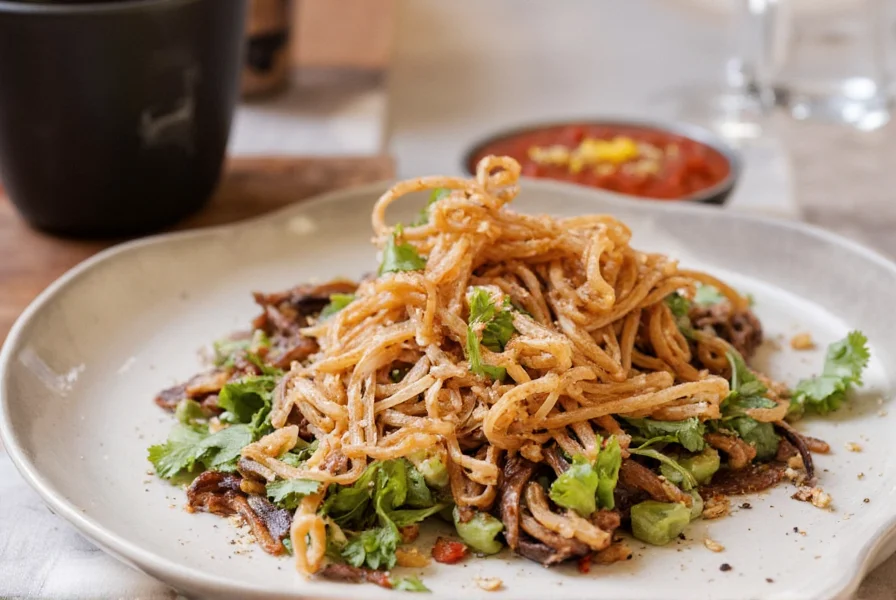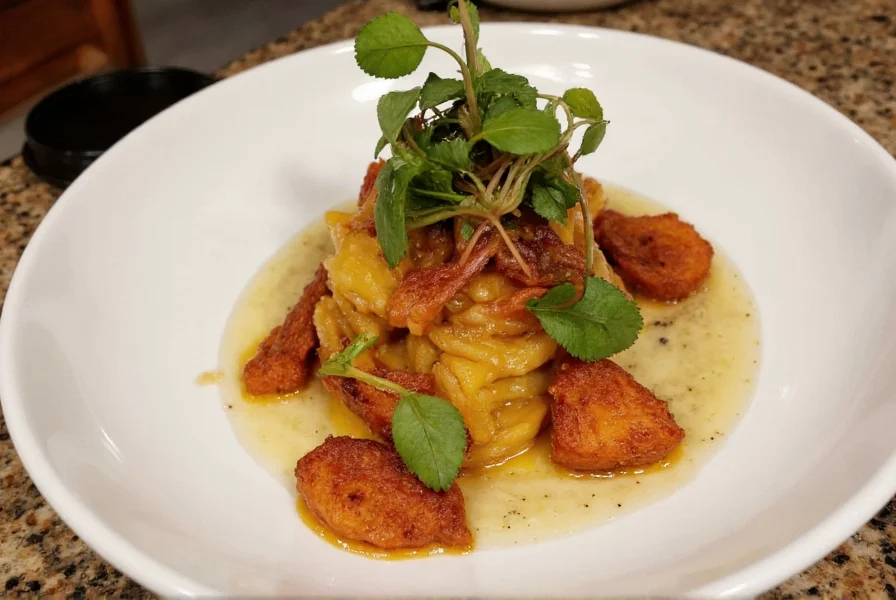When searching for information about a coriander bistro, you're likely exploring a dining concept centered around one of the world's most widely used herbs. Coriander bistros distinguish themselves by making this vibrant, citrusy herb a signature element across their menu offerings, from appetizers to desserts. These establishments typically blend traditional recipes with modern presentation, creating a specialized culinary experience that celebrates coriander's versatility.
Understanding the Coriander Bistro Concept
The name "coriander" in a restaurant's title signals more than just a random choice—it indicates a deliberate culinary focus. Coriander (both the fresh leaves known as cilantro and the dried seeds) serves as a foundational flavor in many global cuisines. A bistro bearing this name typically showcases dishes where coriander isn't merely an accent but a defining characteristic.
Unlike generic ethnic restaurants, a coriander-focused establishment demonstrates intentionality in menu development. Chefs at these venues often highlight seasonal variations of coriander-based dishes, explore different preparations of the herb (fresh, dried, roasted), and may even feature coriander in unexpected applications like cocktails or desserts.
| Culinary Tradition | Coriander Usage | Signature Dish Examples |
|---|---|---|
| Middle Eastern | Fresh leaves in salads, chutneys, and marinades | Coriander-lime grilled meats, herb-packed tabbouleh |
| Indian | Seeds in spice blends, fresh in chutneys | Dhania chicken curry, coriander-mint raita |
| Southeast Asian | Essential in noodle dishes and dipping sauces | Pho with generous coriander topping, herb-forward spring rolls |
What to Expect From the Menu
When exploring coriander bistro menu offerings, anticipate creative applications of this herb beyond typical garnishing. Many such establishments develop multi-course tasting menus that showcase coriander's evolution through a meal:
- Starters: Coriander-infused cocktails, herb-focused dips like coriander-yogurt spreads, or crispy coriander fritters
- Mains: Proteins marinated in coriander-based pastes, grain dishes with toasted coriander seeds, or seafood preparations featuring fresh coriander
- Desserts: Surprisingly, some innovative bistros incorporate coriander into sweet applications like coriander-lime sorbet or spice cakes with ground coriander
The most authentic coriander bistros maintain relationships with local herb growers to ensure peak freshness, recognizing that coriander's flavor deteriorates quickly after harvesting. This farm-to-table approach significantly impacts the dining experience, as freshly picked coriander delivers a bright, citrusy note that wilted herbs cannot match.

Dining Experience and Atmosphere
The ambiance of a true coriander bistro often reflects its culinary philosophy—fresh, vibrant, and thoughtfully composed. Many feature open kitchens where you can observe chefs meticulously preparing herb-based dishes, sometimes even incorporating live coriander plants into the decor.
Service style typically balances casual bistro comfort with knowledgeable staff who can explain the significance of coriander in various dishes. Staff at quality establishments understand the difference between fresh coriander leaves and ground coriander seeds, and can articulate how each contributes uniquely to the menu items.
When evaluating a coriander-focused restaurant experience, consider these factors that distinguish authentic concepts from those merely using the name for marketing:
- Does the menu explain how coriander features in dishes beyond simple garnish?
- Are there multiple preparations showcasing different parts of the plant (leaves, stems, roots, seeds)?
- Does the restaurant demonstrate seasonal awareness regarding coriander availability?
- Can staff discuss the sourcing of their coriander and its impact on flavor?
Price Range and Value Considerations
Coriander bistros typically fall into the mid-to-upper price range for casual dining. The specialized nature of the concept often justifies slightly higher pricing, particularly when restaurants maintain direct relationships with herb suppliers to ensure premium quality. Expect entree prices generally between $18-$28, with tasting menus ranging from $45-$75 per person.
The value proposition centers on the unique culinary perspective—rather than offering generic "ethnic" dishes, these establishments provide an educational and sensory experience focused on a single, versatile ingredient. The best venues demonstrate coriander's remarkable range, transforming what many consider a simple garnish into the star of the culinary show.

Evaluating Authenticity in Coriander Cuisine
Not all restaurants using "coriander" in their name deliver an authentic experience. To determine if a so-called coriander bistro genuinely centers this herb in their culinary approach, look for these indicators:
- Menu specificity: Vague references like "with herbs" suggest coriander isn't truly central, while detailed descriptions of coriander preparations indicate genuine focus
- Seasonal variations: Authentic establishments adjust their coriander usage based on seasonal availability and flavor profiles
- Multiple applications: Look for uses beyond garnish—coriander in sauces, marinades, spice blends, and even desserts
- Staff knowledge: Team members should understand coriander's role in different dishes and culinary traditions
A truly exceptional coriander bistro doesn't just use the herb—it tells a story through it, connecting diners to the cultural traditions where coriander plays a starring role. The experience should educate while delighting the palate, making what might seem like a simple herb into a gateway to understanding broader culinary traditions.
Frequently Asked Questions
What makes a restaurant a 'coriander bistro' rather than just using coriander in dishes?
A true coriander bistro centers coriander as a defining culinary element throughout the menu, not just as occasional garnish. These establishments typically feature multiple preparations of coriander (fresh leaves, stems, roots, seeds), explain its significance in dishes, and often source premium quality coriander specifically for their menu. The herb appears in creative applications across courses, demonstrating intentional menu design focused on this ingredient.
Are coriander bistros typically associated with specific cuisines?
Yes, coriander bistros most commonly draw from Middle Eastern, Indian, and Southeast Asian culinary traditions where coriander plays a fundamental role. You'll find these establishments specializing in regional dishes that authentically feature coriander as a primary flavor component rather than just an accent. Some innovative bistros create fusion concepts that blend these traditions while maintaining coriander as the unifying element.
Can coriander be used in dessert applications at these bistros?
Absolutely. Progressive coriander bistros often feature creative dessert applications where coriander's citrus notes complement sweet preparations. Examples include coriander-lime sorbet, spice cakes with ground coriander, or fruit salads with fresh coriander infusion. These applications showcase the herb's versatility beyond savory dishes and demonstrate the kitchen's innovative approach to their signature ingredient.
How can I identify an authentic coriander-focused restaurant experience?
Look for specific menu descriptions detailing coriander's role in dishes, seasonal variations reflecting coriander availability, multiple preparations using different parts of the plant, and knowledgeable staff who can discuss sourcing and culinary significance. Authentic establishments treat coriander as a star ingredient with thoughtful applications throughout the menu, rather than just mentioning it as a generic herb.
What should I expect to pay at a quality coriander bistro?
Main courses at authentic coriander bistros typically range from $18-$28, reflecting the specialized nature of the concept and often premium herb sourcing. Tasting menus showcasing coriander's versatility may range from $45-$75 per person. The pricing reflects not just the ingredients but the culinary expertise required to feature a single herb meaningfully across a complete dining experience.










 浙公网安备
33010002000092号
浙公网安备
33010002000092号 浙B2-20120091-4
浙B2-20120091-4